Aiming for Over the Counter ("OTC") hearing aids where everyone can share the moment,
for richer conversations and experiences


Aiming for Over the Counter ("OTC") hearing aids where everyone can share the moment,
for richer conversations and experiences
We aim to realize a future where everyone can share the moment.
Sony's self-fitting OTC hearing aids were launched in the US in October 2022. We interviewed the members of the development team on what kind of world they envision and with what kind of passion they experienced by working on the project.
- *Caution and infection prevention measures were implemented at the time of the interview and filming.
- *Masks were only removed for photo purposes.
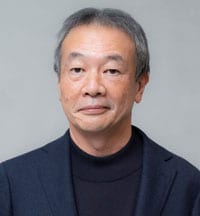
 Koji Okumoto
Koji OkumotoSony Corporation
New Business & Technology Development Group,
Hearing Business Development Department
Product Development Leader

 Takashi Hattori
Takashi HattoriSony Corporation
New Business & Technology Development Group,
Hearing Business Development Department
Product Planning Manager

 Takahiro Tsuge
Takahiro TsugeSony Group Corporation
Creative Center
Product Design Manager
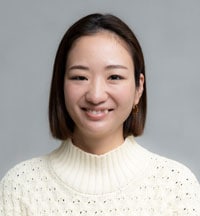
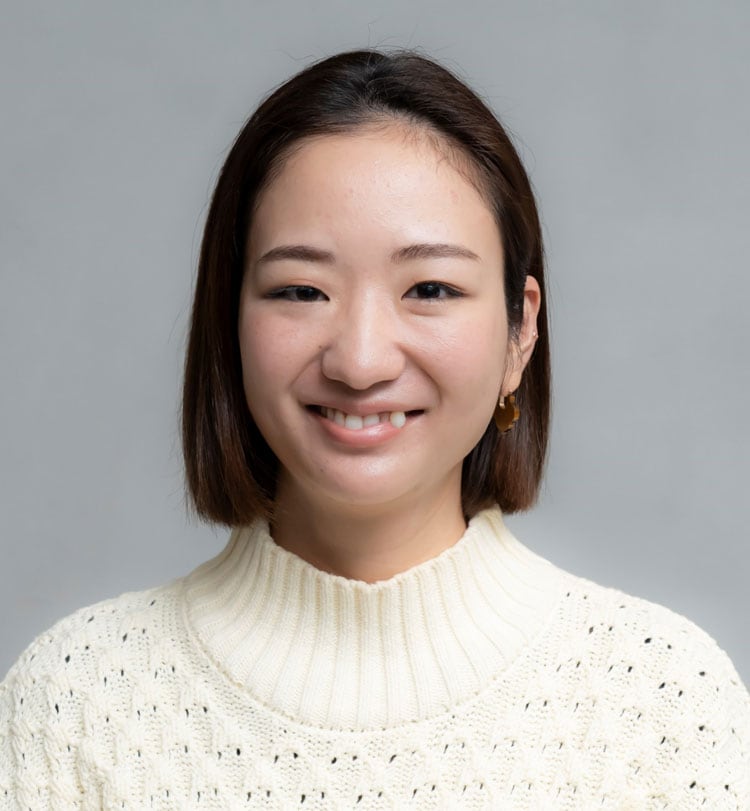 Chihiro Aoshima
Chihiro AoshimaSony Group Corporation
Creative Center
Communication Design Manager
Hearing aids, which are supposed to help solve social problems, are not being used
Okumoto: Most hearing aids available today are specialized for hearing people's voices and for conversation, but there are still many issues that remain to be addressed. We felt that there were many parts that Sony could solve by utilizing the vast experience of headphones and audio technology that we have accumulated over the years. We could approach the problem in a different way, by providing OTC hearing aids with an entertainment aspect to deliver a more enjoyable experience. This is how the project got started.
Hattori: Our initial market research revealed that hearing aid use is low, even in countries and regions with aging populations. In Japan, the figure is about 14.4%[1]. Even in the US, only less than 20% of people aged 20-69 who need hearing aids wear them[2]. On the other hand, research shows that if hearing loss is left untreated, the risk of dementia increases, which could lead, not only to anxiety and suffering for the person with hearing loss, but also increased medical costs and need for caregiving - which increases the amount of work required by the people around them. In response to this situation, there was a movement in the US to improve the wearing rate of hearing aids. The government approved a new category of hearings aids, called OTC hearing aids, which can be purchased without a professional intervention or prescription for people, 18 years of age or older, with mild to moderate hearing loss. Therefore, by leveraging Sony's comprehensive strengths and entering the OTC hearing aid market in the US, we saw an opportunity to help people who have hearing problems but do not use hearing aids.
- *1 Japan Hearing Aid Manufacturers Association "Japan Track 2018"
- *2Quick Statistics About Hearing. (2021, March 25). www.nidcd.nih.gov. Retrieved October 11, 2022, from https://www.nidcd.nih.gov/health/statistics/quick-statistics-hearing
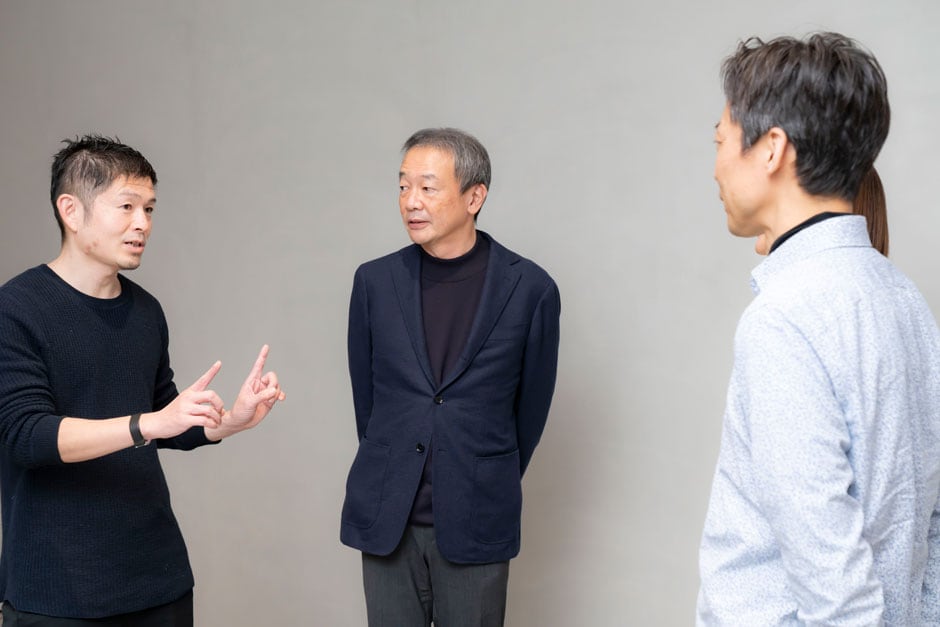
New insights gained through interviews with people with hearing loss
Hattori: Since several of us had experience in the planning and development of medical devices for some time, we knew that we should conduct direct interviews with people who thought they had hearing loss to get a deeper understanding of the backgrounds and scenes of their problems given that desk research may have some un-asked questions. Thus, we conducted interviews with relevant participants and the findings revealed that the way the participant described their type and level of hearing loss differed from one individual to another. Even those with the same hearing ability had different needs for what sounds they wanted to hear in different situations, depending on their preferences, living environment, occupation, etc. The difficulties they faced due to their hearing loss also varied widely between individuals. By interviewing those involved, we were able to confirm the magnitude of their problems - as well as their backgrounds - with more clarity, and we also became acutely aware of the seriousness of the issue. Moreover, some of our preconceptions were overturned by hearing about parrticipant's life experiences. For example, we thought that people with hearing loss might not enjoy music very much, but we found that some of them were learning to play the piano and some were enjoying streaming music. It reminded us that some of our ideas are based on mere assumptions and that the understanding the experience of the customer is very important. It was also around this time that I realized how difficult it is to interview people, and how much depth is involved in it. Emotions like resistance to hearing aids, which are linked to the low rate of hearing aid use, often not apparent at the beginning of the interview or as results in the questionnaire, emerge after the midpoint of the interview when people have become more relaxed and accustomed to being interviewed. We learned that we need to change the way we ask our questions to better achieve our objectives around learning.
Okumoto: We heard of many situations that caused problems not only for the individual but also for those around them. For example, when family members need to speak loudly or when the TV volume needed to be quite loud. Since our target area was the US, we conducted a series of interviews mainly in that area and found that there were three main reasons why people do not wear hearing aids even if they may have needed them. First, like in Japan, people do not want to wear hearing aids, because they (i) are associated with aged people, and (ii) do not want other people to know that they have hearing loss. I had imagined that because of the wider acceptance of diversity in the US, such negative feelings would be lower in the US than in Japan, but we found that such feelings are just as strong, or maybe even stronger there than in Japan. Second, we found that, while hearing aids are necessary, many people are bothered by the hassle of wearing them, as well as the need for continuous maintenance and adjustment. As a result, they will stop using them. Third, is the price. The average price of a pair of hearing aids is about 600,000 yen, which is very expensive. Although insurance and other forms of financial support are gradually being introduced, it still places a heavy burden on the user.
Hattori: Based on the interviews, we came up with new hypotheses that could solve the current problems, and then we interviewed the people involved about our ideas to get feedback on them. For example, we discovered a variety of things about the shape of hearing aids during this process. At first, we thought that the RIC (receiver-in-canal) design would be widely accepted because it is compact enough to be nearly invisible behind the ear, making it inconspicuous. However, many people with hearing loss who have been avoiding the purchase of hearing aids said this design feels like a symbol for hearing aids, which discourages them from buying one. On the other hand, some said that the wireless earphone type, which is placed in the ear canal ("ITE"), works well in a private environment, but is not preferable to be worn in face-to-face meetings at work because it makes it look like they are not listening to what is being said. They did not want to use something that did not fit the occasion because they did not want their hearing loss to be known to others. We also found that there was a range in demand for different shapes.
Tsuge: At the time of development, I imagined that Sony earbuds could simply be used as hearing aids given that earbuds are quite popular for listening to music nowadays. However, it was surprising when the results of the interview revealed that a product like Sony earbuds would be too large or too conspicuous, and that people wanted something smaller. Because of this, we tried to figure out a way to eliminate the negative image of hearing aids by making the first-generation OTC hearing aids, which are currently on the market, as inconspicuous as possible. We tried to make the metallic treatment on the microphone that we have in regular earbuds inconspicuous and made it so that Sony's logo are not visible from the front. Also, while most hearing aids generally resemble the shape of the ear, we wanted to stay faithful to Sony's unique design and shape. The part that goes in the ear is shaped to fit the shape of the ear to make it comfortable to wear, while on the front side, we made a ridge-like design where the top and side planes meet to accomplish a clean finish.
 Sony CRE-E10 OTC Hearing Aids
Sony CRE-E10 OTC Hearing AidsShaped to make it comfortable to wear, with the front-side having a ridge-like design where the top and side planes meet to accomplish a clean finish
Aoshima: In the way we interacted with customers, we were conscious of differentiating our products from the conventional image of hearing aids, while at the same time staying close to the comfortable lifestyles that people with hearing loss wanted to experience. I was very conscious of this when taking still photography and selecting photos for packaging, websites, and other media. For this project, we set our target users as active seniors, the generation that continues to work, so while imagining their real lifestyles, we consciously chose models so that people of all ages would feel like the hearing aids were a part of them to eliminate the assumption that hearing aids are only for the elderly. We also devised packaging and advertising that made the product look like hearing aids rather than earbuds. The three overlapping circles were used as an icon for our product and placed on the model's ear to create a "hearing aid-like listening sensation". We use the three circles in advertisements such as packages and product videos, as a common icon that is not overly descriptive, to express a smart OTC hearing aid product.
 The photo on the package of the OTC hearing aids. The three overlapping circles are positioned over the model's ear to create a "hearing aid-like listening sensation".
The photo on the package of the OTC hearing aids. The three overlapping circles are positioned over the model's ear to create a "hearing aid-like listening sensation".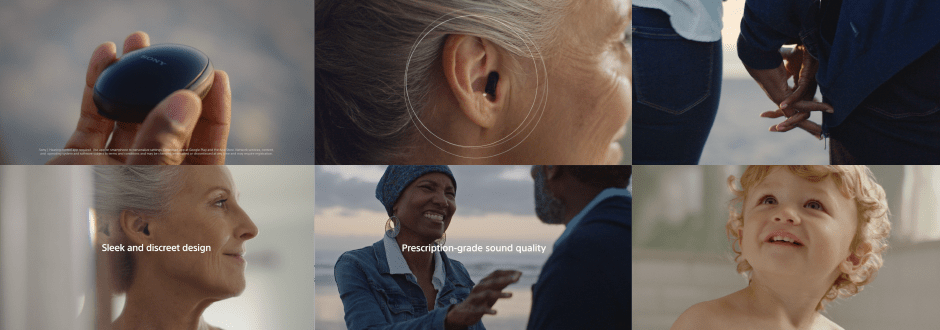 An introduction video of the OTC hearing aids, developed in the same spirit as the photo on the package. Click here to see the introduction video.
An introduction video of the OTC hearing aids, developed in the same spirit as the photo on the package. Click here to see the introduction video.Feeling of being close to the users from the reviews
Hattori: When Sony's OTC hearing aids actually went on sale, we were happy to see comments from customers posted on social media and sales websites, such as "The [OTC] hearing aids don't stand out, which makes them easy to use because people around me hardly notice I'm wearing them," and "I can easily adjust them with my smartphone, and it changed my world by providing a hearing experience that fits me", which is exactly what we were aiming for. I think this is the result of listening to users' voices before and during development. Some comments also mentioned that not only the wearers themselves, but also their families and people close to them, were happier. Again, I felt that this was connected to Sony's key message of accessibility "Delivering innovation for an accessible future". In the future, we will continue to develop the basic functions of our OTC hearing aids and propose new features that add value to them.
Okumoto: Usually the comments we receive about our products are relatively short, but here we were impressed by the many enthusiastic and lengthy comments we received about Sony's OTC hearing aids, such as a daughter buying one for her mother or not having to speak so loudly anymore. For the future versions, we would like to make it even easier to change settings and make adjustments on your smartphone. We would also like to add more Bluetooth functions to future designs of the device.
Tsuge: Throughout the interviews, we heard feedback that some are losing and giving up on the excitement that they get through their ears. At this stage, we have solved the problem of moderate to mild hearing difficulties, to the extent that important voices and sounds can be heard; but in the future, we plan to expand this in a direction that can deliver even more excitement. On top of that, we want to create something that people with hearing challenges will willingly want to wear. Since "Kando (emotion)" is a key focus for Sony, we would like to offer this to people with mild to moderate hearing loss. Also, in terms of design, since hearing aids are worn as a personal item, we would like to allow each individual to customize the appearance to their liking.
Aoshima: In terms of our goals, we want to be aware of not just "expansion", which was just mentioned, but "harmony". Eventually, OTC hearing aids will blend in with a person's style and become so integrated into the body that their existence as hearing aids will be forgotten. I hope we can move toward such a future.

Sony's approach to OTC hearing aids combines proprietary technologies to create an unprecedented hearing experience and improve users' lives. We will continue to pursue and improve the accessibility of our products, services, and experiences for an inclusive future by learning through continuous dialogue with users based on our proposals/hypotheses and by conducting in-depth research with many people.

